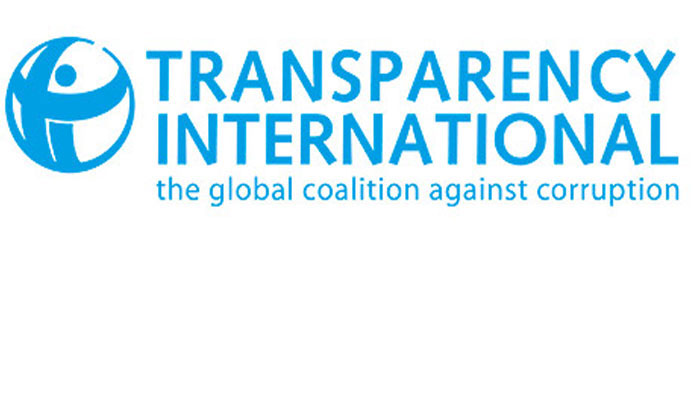How transparent is TI report!
ISLAMABAD: The government has rejected the report of Transparency International (TI) by terming it ‘biased’ and raised questions on the transparency of the report. However, the facts and methodology of the report totally contradict the government’s narrative.
Special Assistant to Prime Minister (SAPM) on Information and Broadcasting Dr Firdous Ashiq Awan in a press briefing raised serious questions on the transparency of TI report. Shesaid it is necessary to expose the people and the data on the basis of which this report was issued. The government believe that this is a managed report, Firdous said.
On the contrary, the methodology of the TI’s recent report highlighting the Pakistan’s ranking on global corruption perception index (CPI) which slipped to a five-year low of 120 out of 180 nations proves that the report is not only transparent but accurate as well. The Transparency International Berlin includes no input from the regional TI chapters in its report. Rather, the CPI 2019 is calculated using 13 different data sources from 12 different institutions that capture perceptions of corruption within the past two years.
The CPI is based on seven key indicators. Each data source that is used to construct the CPI must fulfil the following criteria to qualify as a valid source and if any indicator is missing the TI doesn’t use it as a valid source. The seven indicators include; a) Quantifies perceptions of corruption in the public sector, b) Be based on a reliable and valid methodology, which scores and ranks multiple countries on the same scale, c) Performed by a credible institution, d) Allow for sufficient variation of scores to distinguish between countries, e) Gives ratings to a substantial number of countries, f) The rating is given by a country expert or business person, g) The institution repeats their assessment at least every two years. Without these seven indicators the data source will be considered incomplete. Hence, the government’s objections to the report are not based on facts.
The TI also adopts three other steps to calculate the CPI, which include standardised data sources, calculate the average, and report a measure of uncertainty. Standardised data sources to a scale of 0-100 where a 0 equals the highest level of perceived corruption and 100 equals the lowest level of perceived corruption. This standardisation is done by subtracting the mean of each source in the baseline year from each country score and then dividing by the standard deviation of that source in the baseline year. This subtraction and division using the baseline year parameters ensures that the CPI scores are comparable year on year since 2012. After this procedure, the standardised scores are transformed to the CPI scale by multiplying with the value of the CPI standard deviation in 2012 (20) and adding the mean of CPI in 2012 (45), so that the data set fits the CPI’s 0-100 scale.
Calculate the average: For a country or territory to be included in the CPI, a minimum of three sources must assess that country. A country’s CPI score is then calculated as the average of all standardised scores available for that country. Scores are rounded to whole numbers. Report a measure of uncertainty: The CPI is accompanied by a standard error and confidence interval associated with the score, which captures the variation in scores of the data sources available for that country/territory.
As per the technical methodology manual of CPI 2019, it follows four basic steps: selection of source data, rescaling source data, aggregating the rescaled data and then reporting a measure for uncertainty.
The calculation process also incorporates a strict quality control mechanism, which consists of parallel independent data collection and calculations conducted by two in-house researchers and two academic advisers with no affiliation to Transparency International.
Selection of data sources: The CPI draws upon 13 data sources which capture the assessment of experts and business executives on a number of corrupt behaviours in the public sector, including: Bribery, Diversion of public funds, Use of public office for private gain, Nepotism in the civil service and State capture.
Some of the sources also look at the mechanisms available to prevent corruption in a country, such as: The government’s ability to enforce integrity mechanisms, the effective prosecution of corrupt officials, red tape and excessive bureaucratic burden, the existence of adequate laws on financial disclosure, conflict of interest prevention and access to information and legal protection for whistleblowers, journalists and investigators.
In order to carry out this quality assurance process, Transparency International reaches out to each one of the institutions providing data in order to verify the methodology used to generate their scores.
-
 Sharon Stone Lashes Out At Fellow Award Show Attendees After Stealing Accusations
Sharon Stone Lashes Out At Fellow Award Show Attendees After Stealing Accusations -
 Gwyneth Paltrow Reveals Real Reason She Said Yes To 'Marty Supreme'
Gwyneth Paltrow Reveals Real Reason She Said Yes To 'Marty Supreme' -
 King Charles Says He And Queen Camilla Stand With People Of Ukraine
King Charles Says He And Queen Camilla Stand With People Of Ukraine -
 Ben Affleck Argues In Favour Of His Shirtless Scene In 'The Rip'
Ben Affleck Argues In Favour Of His Shirtless Scene In 'The Rip' -
 Mississippi Postal Worker Arrested After Complaints Of Marijuana Odour In Letters
Mississippi Postal Worker Arrested After Complaints Of Marijuana Odour In Letters -
 Canada, China Lock Initial Trade Deal On ‘EV,Canola’ To Strengthen Ties: What To Expect Next?
Canada, China Lock Initial Trade Deal On ‘EV,Canola’ To Strengthen Ties: What To Expect Next? -
 Melissa Leo On Euphoria Of Winning An Oscar Vs It's Impact On Career
Melissa Leo On Euphoria Of Winning An Oscar Vs It's Impact On Career -
 Meghan Markle, Prince Harry Express 'hope' In Latest Major Statement
Meghan Markle, Prince Harry Express 'hope' In Latest Major Statement -
 Sophie Turner Backs Archie Madekwe As BAFTA Announces Nominees
Sophie Turner Backs Archie Madekwe As BAFTA Announces Nominees -
 Jason Momoa Cherishes Hosting Ozzy Osbourne's Final Gig Ahead Of His Death
Jason Momoa Cherishes Hosting Ozzy Osbourne's Final Gig Ahead Of His Death -
 Real Reason Timothee Chalamet Thanked Kylie Jenner At Awards Revealed
Real Reason Timothee Chalamet Thanked Kylie Jenner At Awards Revealed -
 Will King Charles Attend Funeral Of Prince Philip's First Cousin, Princess Irene?
Will King Charles Attend Funeral Of Prince Philip's First Cousin, Princess Irene? -
 'Furious' Prince William Wants Andrew As Far Away As Possible
'Furious' Prince William Wants Andrew As Far Away As Possible -
 Blood Moon: When And Where To Watch In 2026
Blood Moon: When And Where To Watch In 2026 -
 Apple Foldable IPhone Tipped For 2026 Launch With A20 Pro Chip And C2 Modem
Apple Foldable IPhone Tipped For 2026 Launch With A20 Pro Chip And C2 Modem -
 Meghan Lends Credence To Reports Of Rift With Kim Kardashian On Chicago's Birthday
Meghan Lends Credence To Reports Of Rift With Kim Kardashian On Chicago's Birthday




